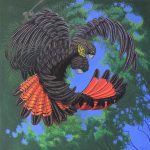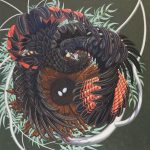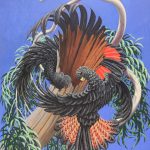Cockatoos and parrots are iconic Australian characters, their beauty, chatter and antics liven up the bush. They are normally a joy to encounter, though the loud raucous calls of some cockatoos can be a bit overwhelming when they gather in numbers as their voices don’t match their beauty. Sleeping next to a camp of whingeing Corellas is not restful (Raucous Welcome), while intruding into a nesting area for Sulphur-crested Cockatoos can be a bit overwhelming if they take exception to your presence (Save the Murray River Red Gums).
Cockatoos and parrots are some of the many Australian animals that depend upon the hollows provided by large old trees for nest hollows. As trees age they develop hollows, though it is only trees hundreds of years old that have hollows large enough for big species, such as cockatoos. Although the outer living skin of the tree may remain healthy, the inner dead wood can be digested by fungi, eaten by termites or burnt out by fire. The resulting hollow branches and trunk provide the hollows used by wildlife. Many species of wildlife will further fashion their hollows using beak, teeth or claws.
Seeds are a major food source for cockatoos. Species, such as Red-tailed Black Cockatoos, are also particularly reliant upon large old eucalypts for the abundance of seeds they produce. As old trees are disappearing from the landscape, so too are these magnificent birds.
Cockatoos mate for life and can live for 40-50 years, though some individuals are reputed to have lived to over 100 years. Their decline may be masked by their longevity.






